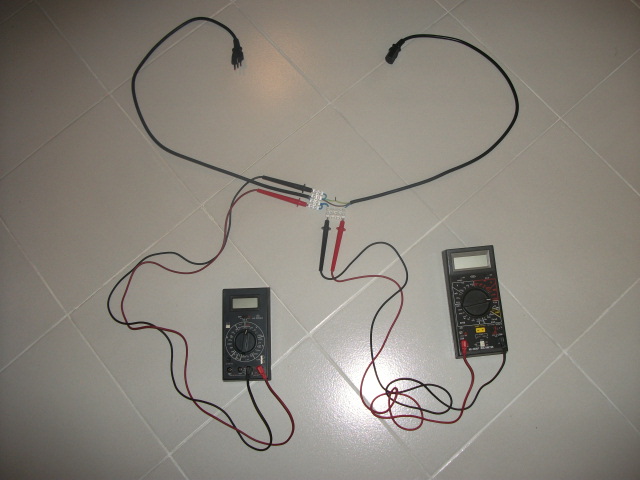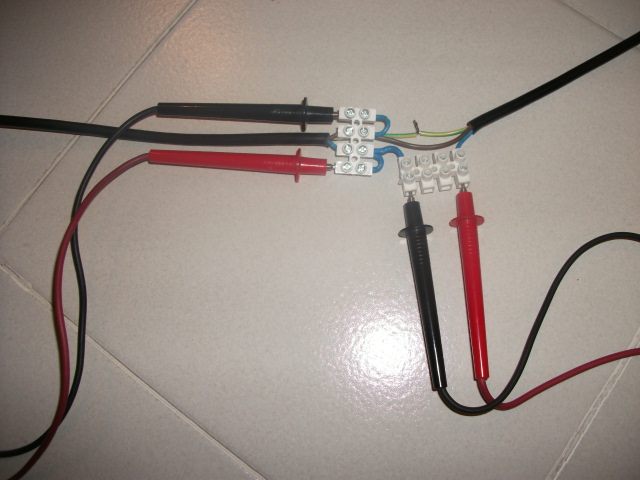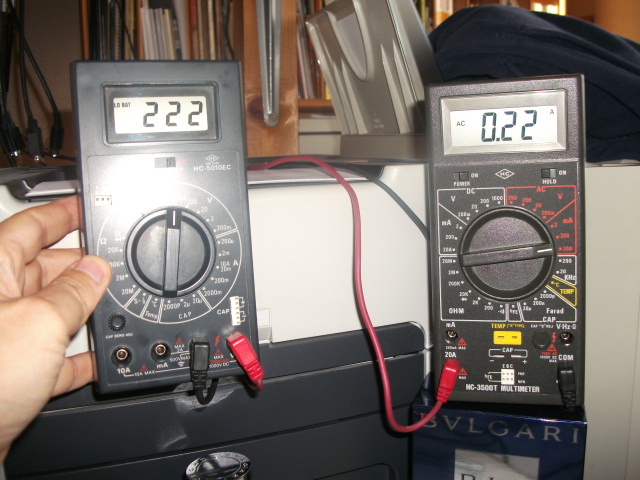
I googled for "PC power consumption" to discover how much current was a generic PC sucking from the mains. No good answers found, so I decided to measure it myself. I sacrificed a power cord and made the modifications shown in the following picture:

Every copper wire end has been hot-dipped (using tin and a solderer) to guarantee good contact into the connectors. The following picture shows the overall measurement system that I set up to make my experiments:

Above you can see the power cord that was cut in the center and the connectors that were put in place to connect a couple of digital multimeters. The following picture details the hearth of the system:

And this last picture is showing a reading of 0.22 Aac at 222 Vac:

I measured a few PCs standing in my laboratory. None of them exceeded 0.48 Aac current absorption (peak). Voltage in my lab at the time of testing was a steady 222 Vac. Now with some results:
Note that PC #1 above is an old one (2004), and was the worst performer in my lab. It has both the 3.5" floppy and a DVD Recorder. PC #2, on the contrary, was the best performer: it is less than 1 year old (2009, june) and is only equipped with the motherboard, CPU, RAM and a SATA2 hard disk (video and Ethernet adapters are embedded into the motherboard). The difference in results between these two PCs are due to the floppy, the DVD-R, the PCI adapter cards and last, but not least, the fact that the old PC is holding on old parallel ATA hard disk, and the new PC is mounting a new SATA2 serial ATA hard disk.
After some experiments I can affirm that a PC with no attachments and 1 SATA2 hard disk should never overcome 0.3 Aac current absorption. Older PCs like #1 above should never surpass the barrier of 0.5 Aac (I did not test during DVD recording nor reading).
I just measured voltage and current, and from these values I can get the so called "apparent power consumption" (Vac x Aac). To get the "true power consumption" I should have made use of a "cos phi meter" that is out of my reach and interest. Anycase cos phi is usually assumed to be between 0.8 and 0.9, and I can get the true power consumption by means of the following formula: Aac x Vac x 0.85. With this in mind, the following table resumes the results of the experiments:
| PC # | nominal voltage | peak current | apparent power consumption | true power consumption |
| #1 | 220 Vac | 0.48 Aac | 106 VA (ac) | 90 W |
| #2 | 220 Vac | 0.28 Aac | 62 VA (ac) | 53 W |